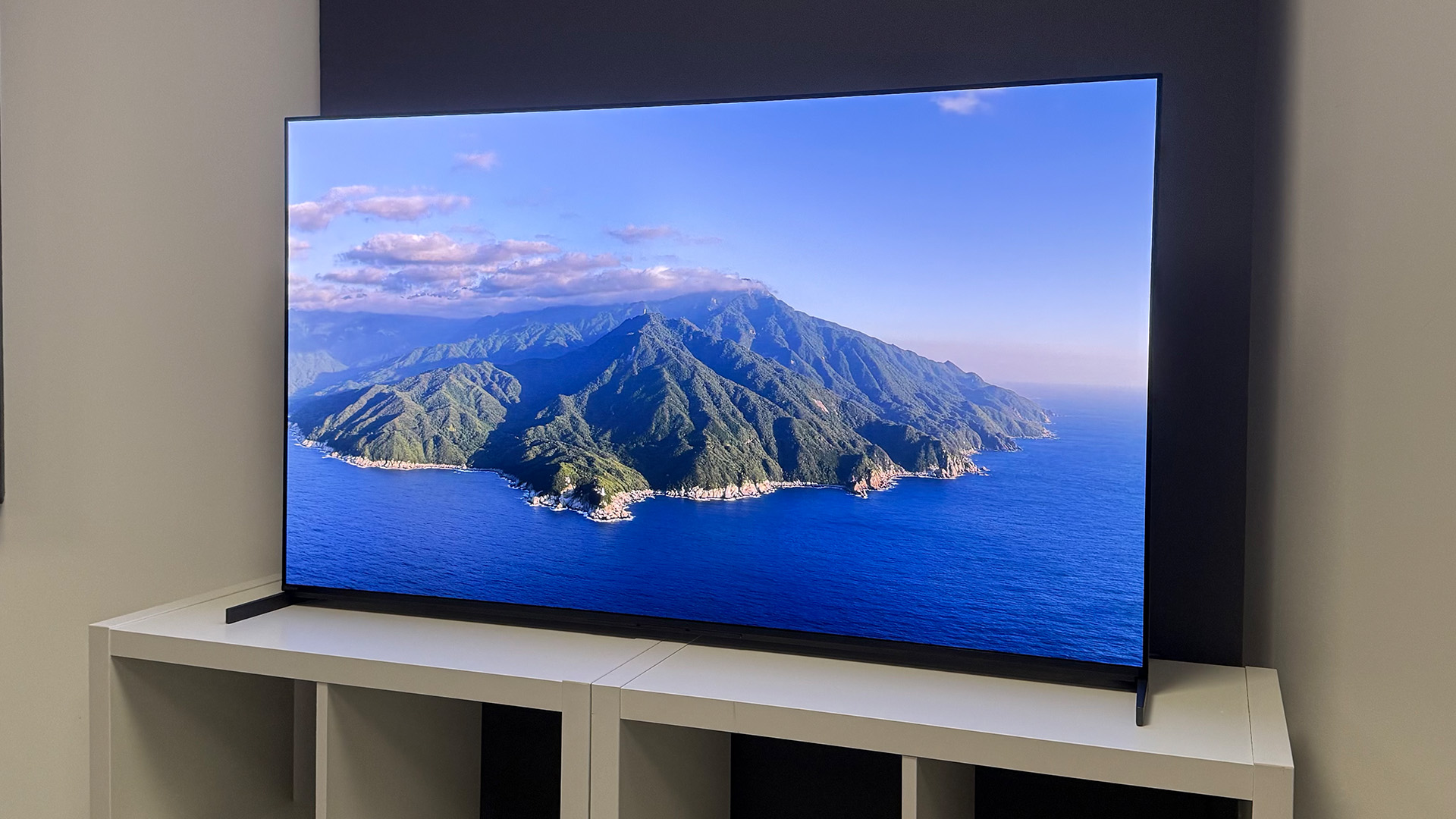12 of the best KEF products of all time
A big hi-fi speaker brand with a brilliant back catalogue
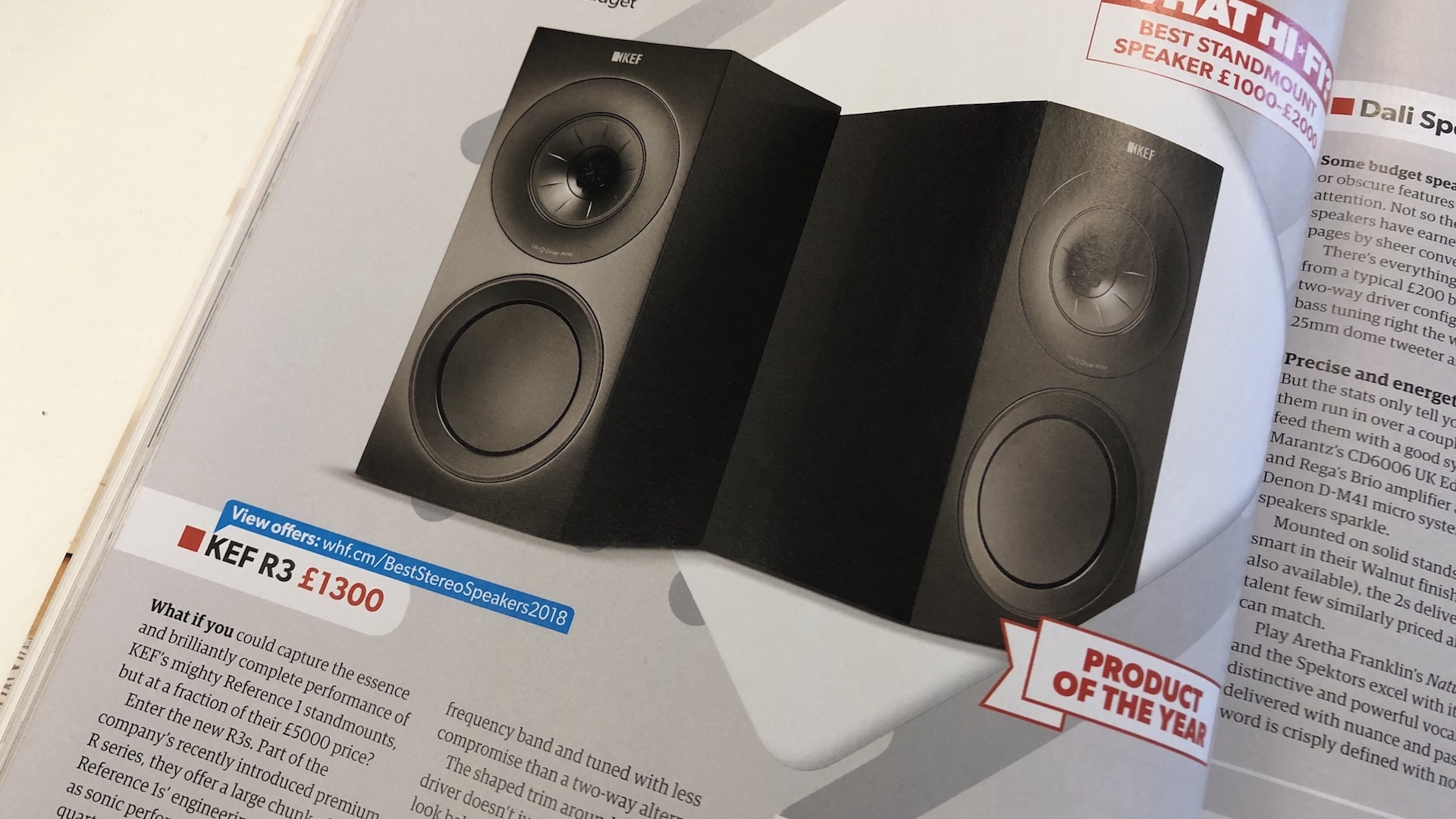
KEF is one of the most well-respected British brands in world hi-fi and has been for well over 50 years.
The company’s ethos is based around engineering, design and development found in trademark technology such as the Uni-Q driver, which still features heavily in its products today.
In recent years the brand hasn’t been afraid to diversify, either, and now covers a wide range of categories, from stereo speakers to custom installation solutions to headphones, wireless speakers and all-in-one streaming systems.
To celebrate British Hi-Fi Week, we’ve rounded up 11 of the best KEF products to pass through our test rooms since the birth of What Hi-Fi? In 1976. So kick back, relax and reminisce.
KEF Coda III (1985)
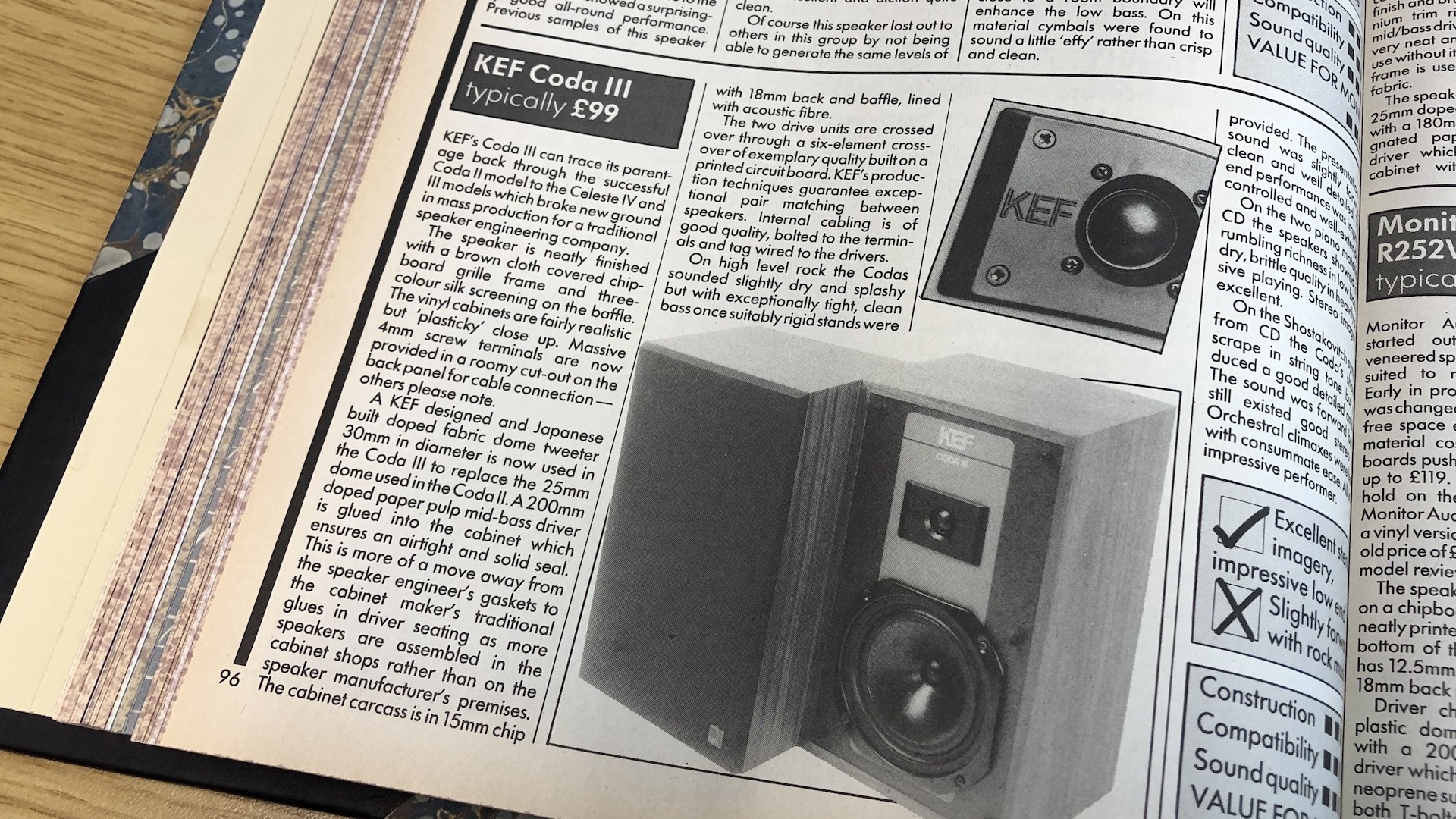
The oldest model on this list, the KEF Coda 3 originally featured in What Hi-Fi? way back in 1985. At just £99, the Codas were a serious bargain and although they didn’t feature KEF’s trademark Uni-Q driver, they still managed to impress. We noted their “excellent stereo imagery” and “clean, controlled and well-extended bass”, as well as their tendency to sound “slightly dry and splashy” with “high level rock”. The Coda III used a KEF designed and Japanese built 3cm fabric dome tweeter, plus a 20cm paper pulp mid-bass driver which was glued into the cabinet to ensure a solid seal. Proper budget speakers didn't get much better in 1985.
KEF 105/3 (1990)

The 105/3 (pictured above, middle) were clever speakers that combined a couple of different KEF technologies. The company's trademark Uni-Q driver was present, but it was also joined by what KEF referred to as its coupled-cavity bass loading tech, which had two drive units actually firing within the speaker’s cabinet. Bass frequencies would then emit from a solitary opening on the front of each speaker. This was done to lower distortion, improve power handling and deliver more bass from a small cabinet. The speakers served a solid, tangible soundstage and rich, textured bass.
KEF Coda 7 (1995)
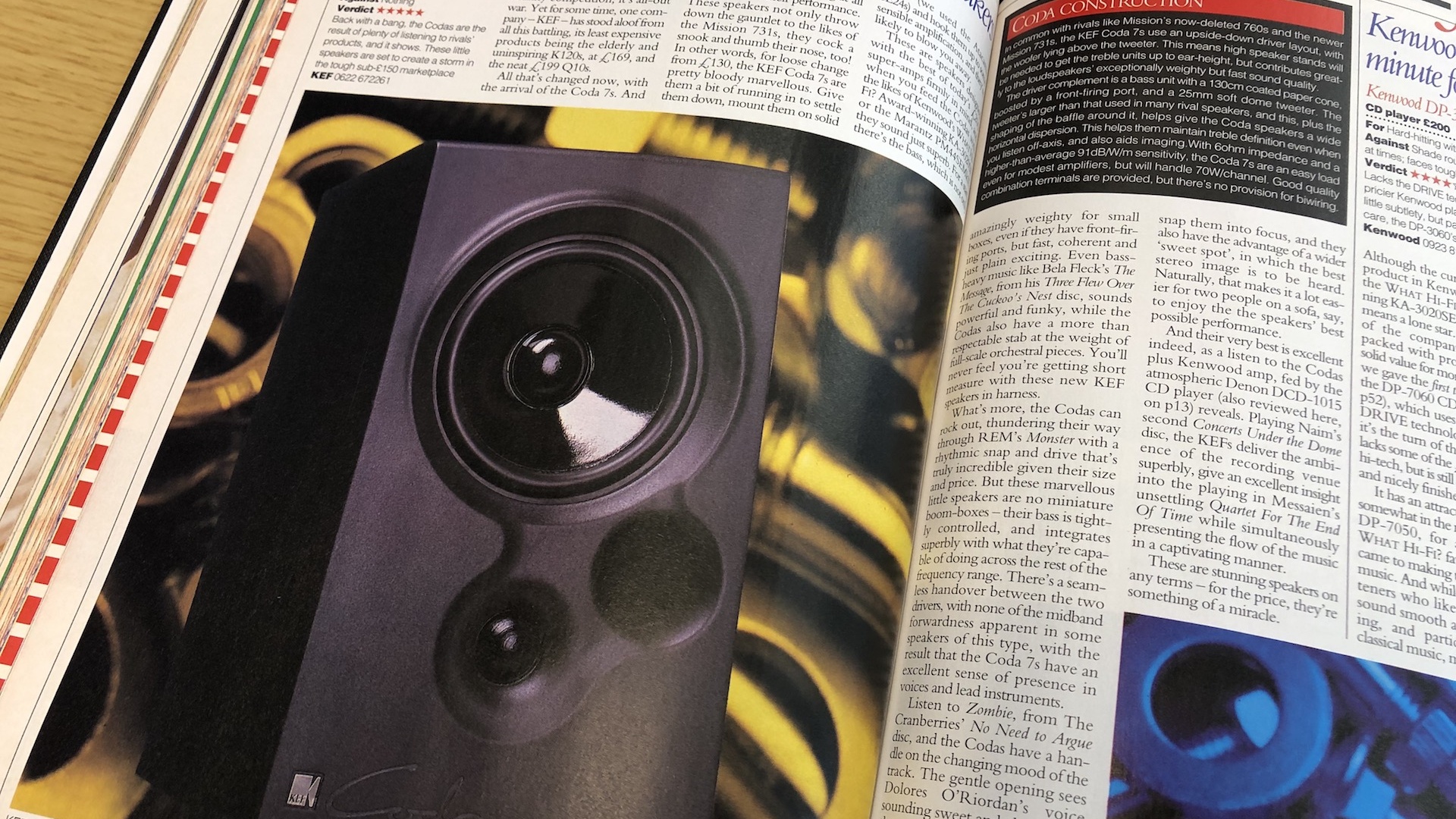
In the mid 1990s, the budget speaker market place was a tough place to be. Mission had a stranglehold and were proving difficult to beat. Enter the Coda 7, KEF’s brave attempt to wrestle back some of that market share. Their 30cm cabinets used an upside-down driver layout with a 13cm coated paper bass driver sat above a 25mm soft dome tweeter. Not the most high-tech design, then, but they still managed to produce an outstanding sound. At the time we said the KEFs “not only throw down the gauntlet to the likes of the Mission 732, they cock a snook and thumb their nose too!” High praise indeed.
The latest hi-fi, home cinema and tech news, reviews, buying advice and deals, direct to your inbox.
KEF Q35 (1997)
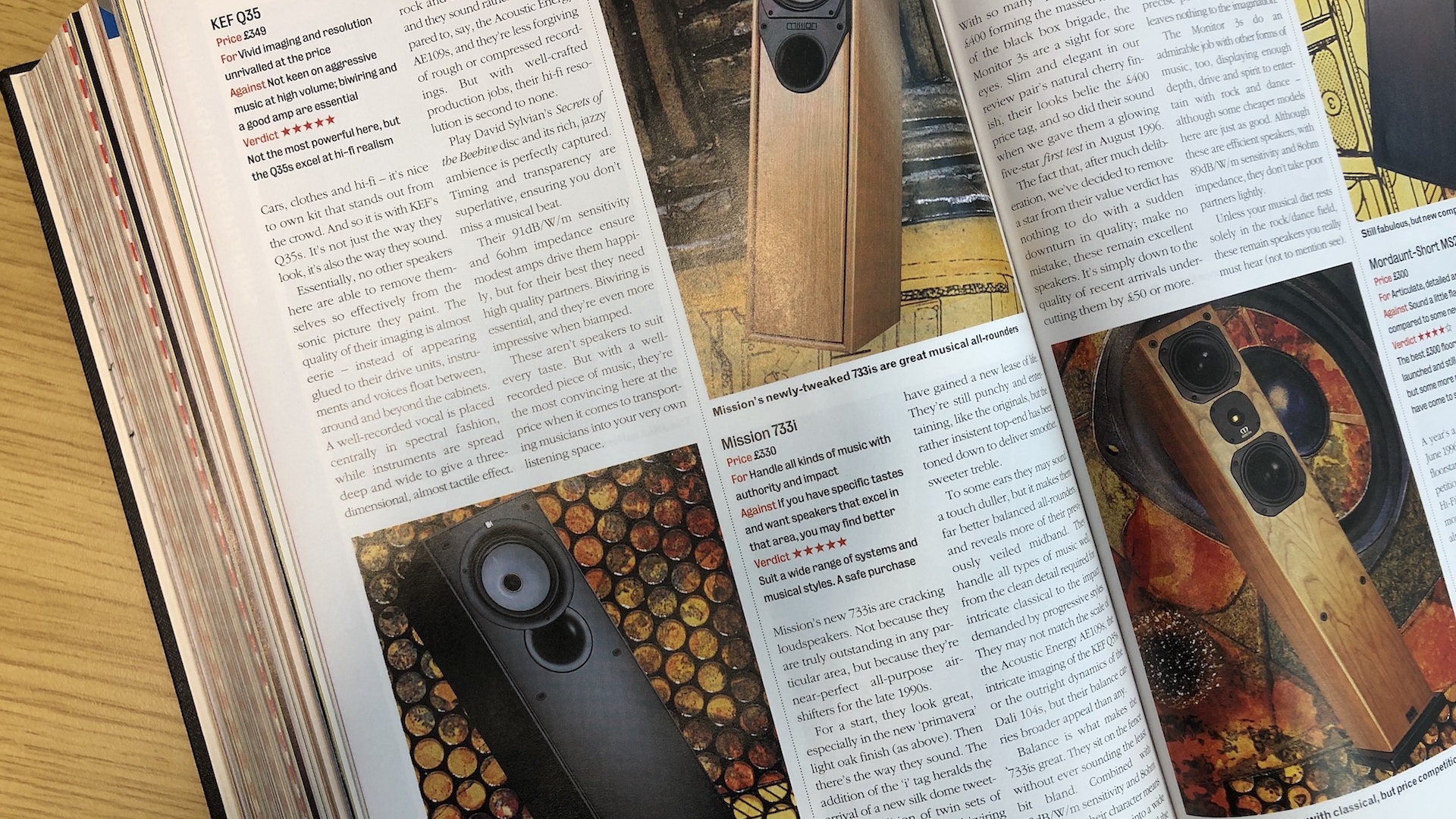
Small and compact floorstanders have a certain charm and this was definitely the case with the diminutive KEF Q35, which debuted in 1997. They weren’t keen on being cranked to the max, but if the quality of your recordings was up to scratch, the KEFs were capable of delivering one of the most realistic sonic experiences available at their £349 price point. We described the quality of their imaging as “almost eerie”, and able to “give a three-dimensional, almost tactile effect”. We also strongly advised that you listen to them bi-wired, which we found only further enhanced their resolution, which was “unrivalled at the price”.
KEF Cresta 2 (1999)

The Coda 7 were always going to be a tough act to follow, but KEF managed to maintain its lofty standards with the arrival of its new Cresta 2 standmounters. At 37cm high, they were relatively tall for budget standmounters and this extra size was reflected in the exceptional sense of scale and openness. Like the Coda 7, the Cresta 2 used a simple 25mm soft dome tweeter with a 13cm coated paper cone, but in a more traditional arrangement, with the former positioned above the latter. Tonal evenness and subtlety weren’t their forte, but it was the stunning musicality that won us over.
KEF KHT2005 (2001)
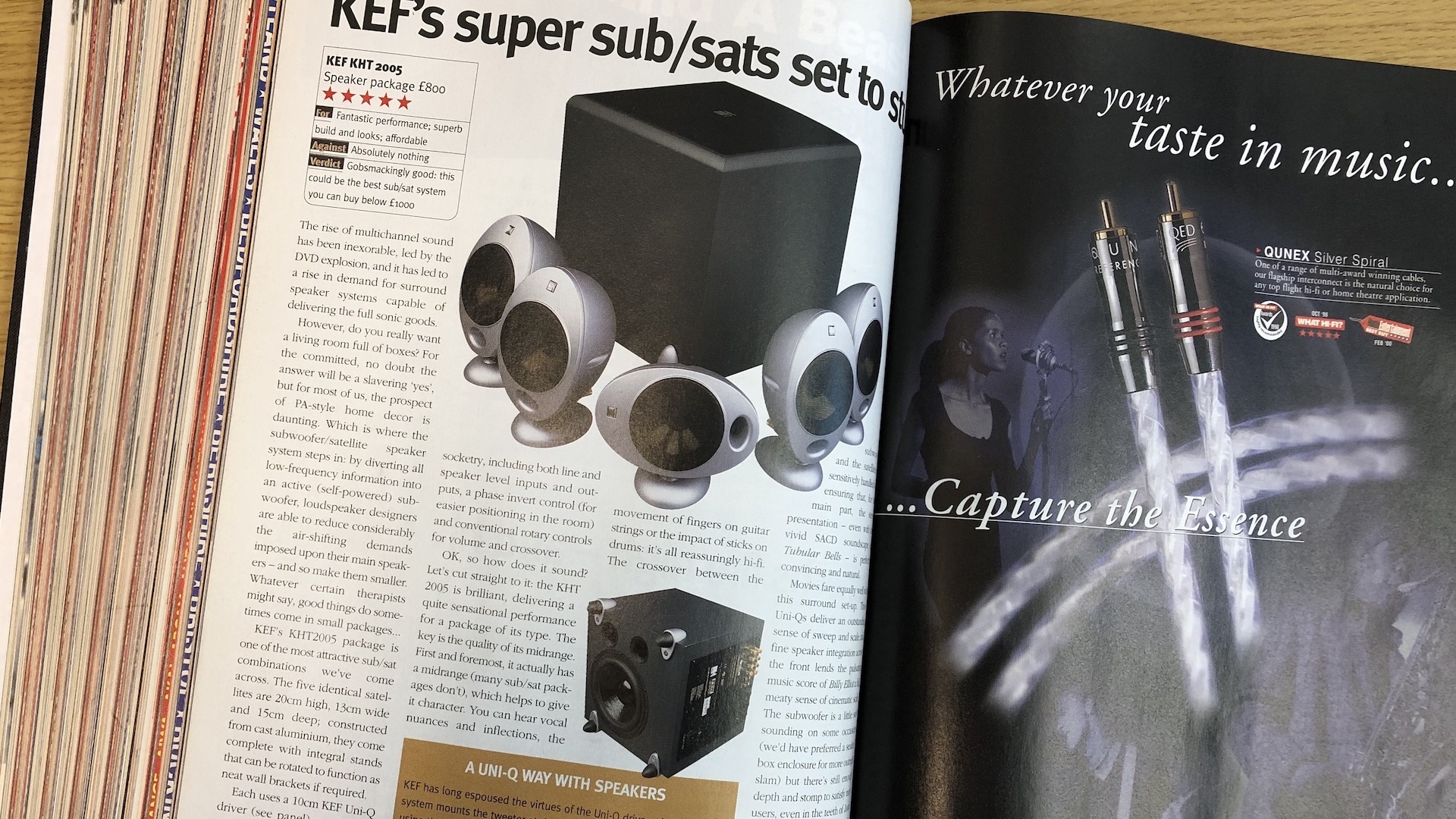
If you want a home cinema icon, then look no further than the KHT2005 from 2001. Affectionately known as the KEF ‘eggs’, this sub/sat system offered not only performance in spades, but a serious dose of style too. The cast aluminium, egg-shaped satellites looked the business and were a welcome distraction from more traditional-looking boxy alternatives. Together with the system’s 150W subwoofer, they combined to produce an exciting, entertaining and cohesive surround sound experience that entertained us for many a year.
- Read our That Was Then... KEF KHT 2005 review
KEF Reference Model 203 (2001)
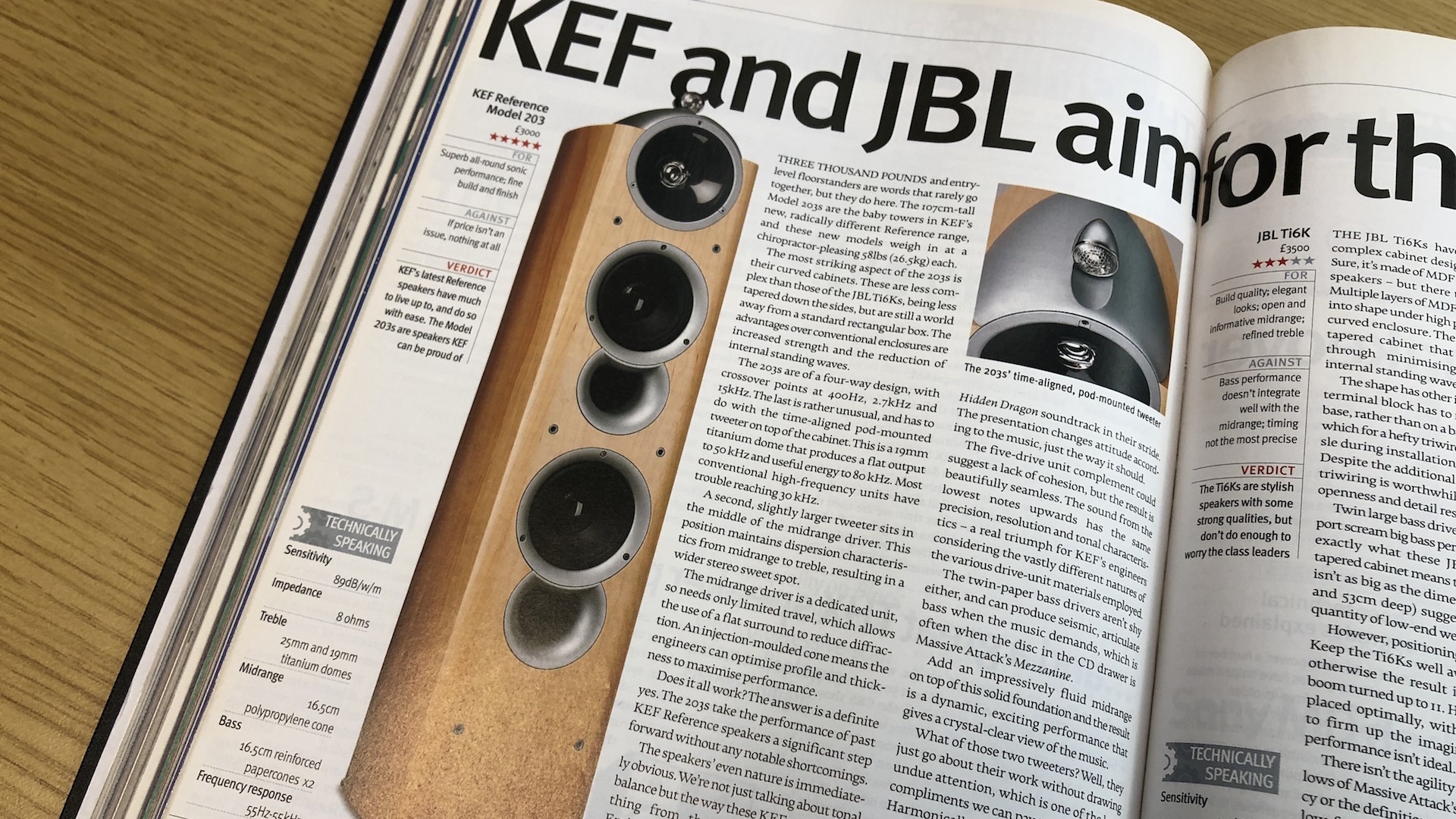
KEF completely revamped its flagship Reference range of loudspeakers in 2001. The Reference 3 were four-way baby towers that boasted beautiful curved cabinets, and a time-aligned tweeter sat on top of a Uni-Q driver. The configuration of the speaker meant KEF had five separate drivers to integrate, yet the 203 still managed to produce a “beautifully seamless” sense of cohesion across the board. We said the speakers delivered a “dynamic, exciting performance that gives a crystal-clear view of the music.” Even at £3k we felt they were worth every penny.
KEF iQ5SE (2007)
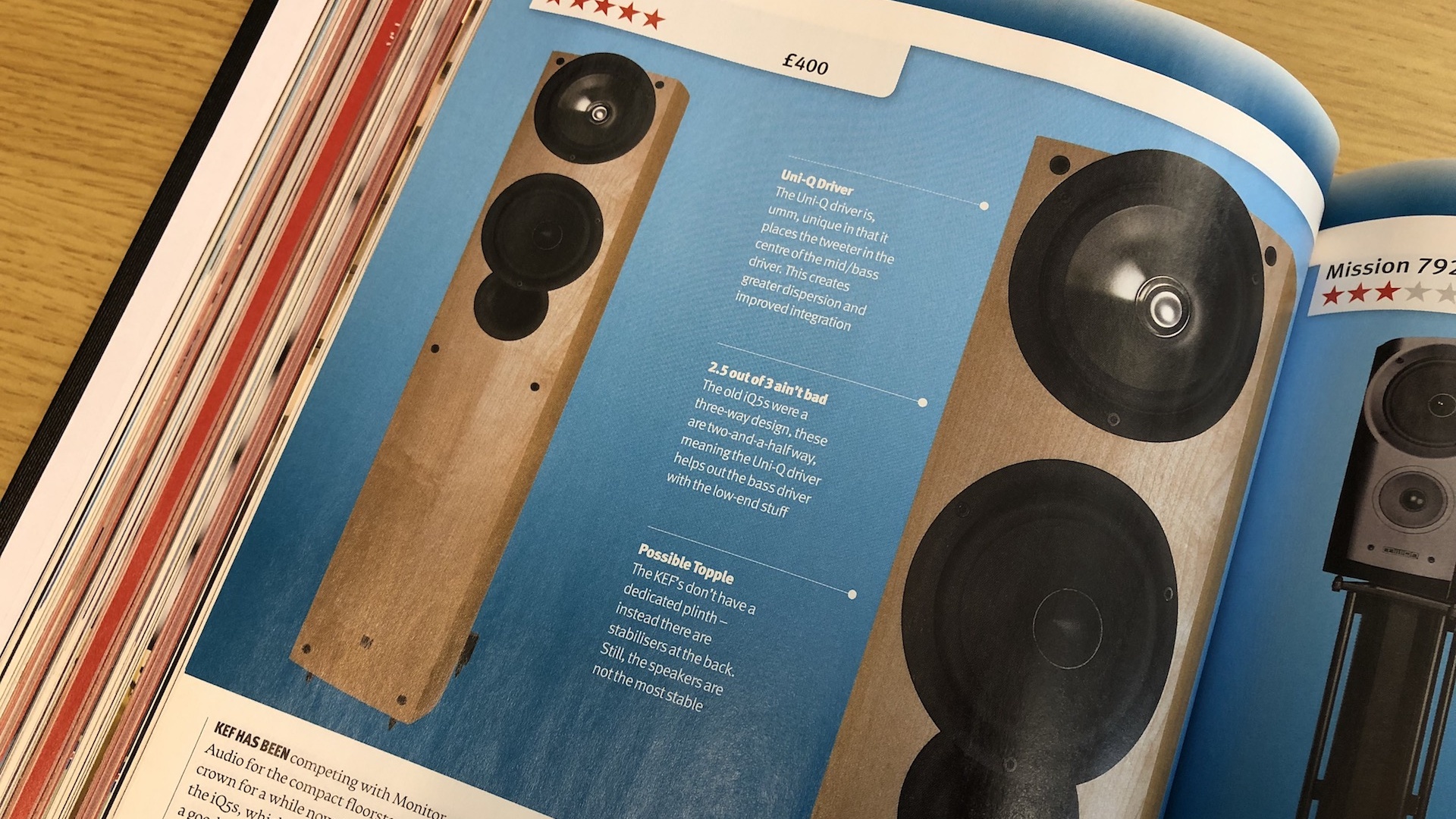
The Q35 evolved over the years and 2007 saw the launch of the iQ5SE variant, which battled it out with the truly exceptional Monitor Audio BR5 and B&W 685 speakers. Like its ancestors, the iQ35SEs were a compact and attractive pair of hugely talented floorstanders. The speakers majored in speed and punch and combined this impressive rhythmic accuracy withn excellent dynamics and stereo imaging, even if they couldn’t quite knock the B&Ws off the top spot.
KEF LS50 (2013)
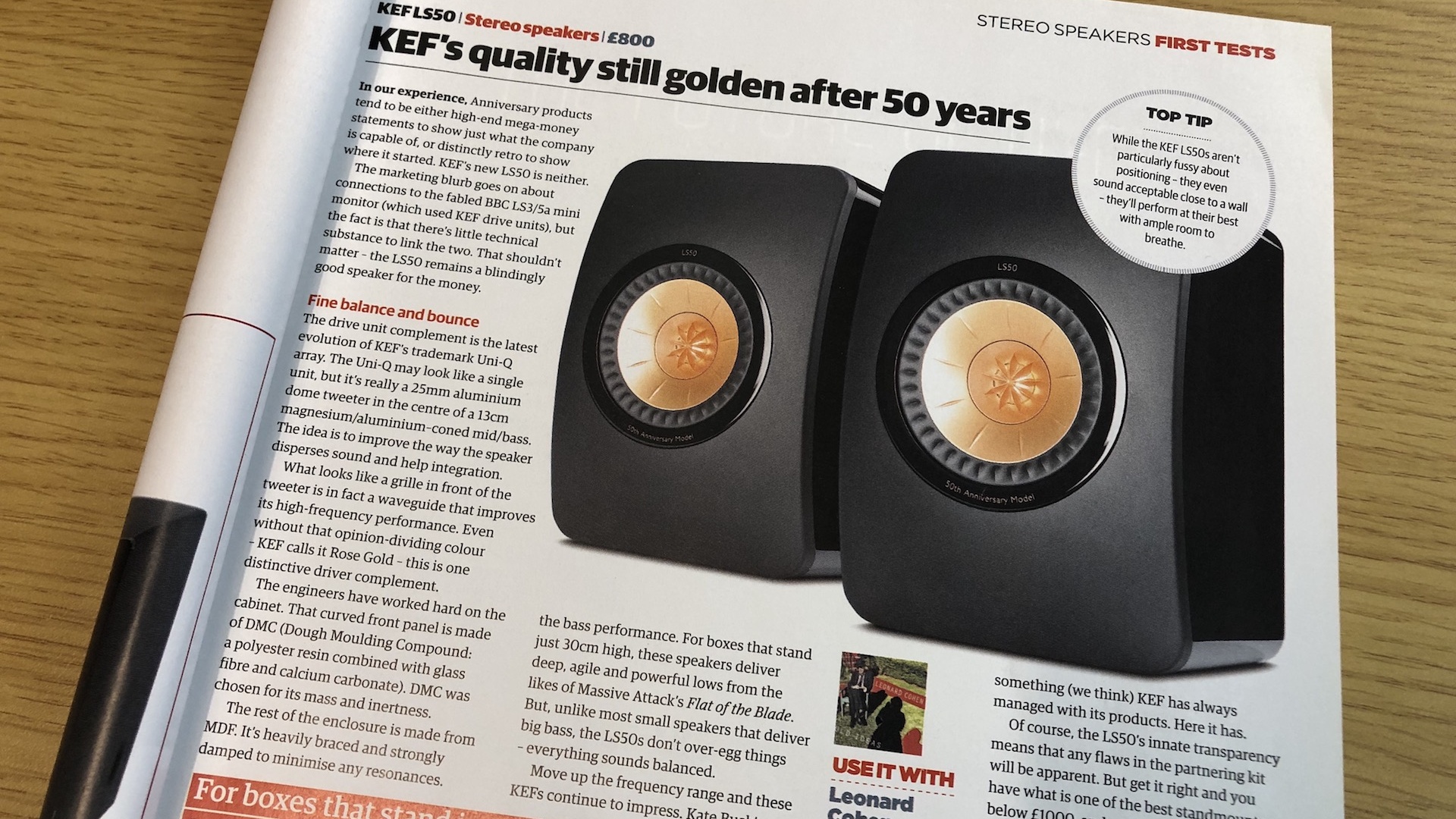
In 2013, to mark KEF’s 50th anniversary, the company celebrated by launching the LS50 standmounters. They weren’t a high-end, mega-money pair of loudspeakers, but they still made quite the impression, blowing the competition out of the water and receiving a glowing five-star review for their troubles. The LS50 boasted striking looks and saw KEF use a new DMC (Dough Moulding Compound) material for their curved front panels. They also featured unusually flexible bass reflex ports designed to reduce unwanted midrange distortions. Needless to say the LS50 sounded exceptional, with impressive dispersion, a huge stereo image and big, communicative bass. They've left a lasting impression, too, laying the foundations for further LS50 models we have noted below.
- Check out our full KEF LS50 review
KEF Reference 1 (2018)
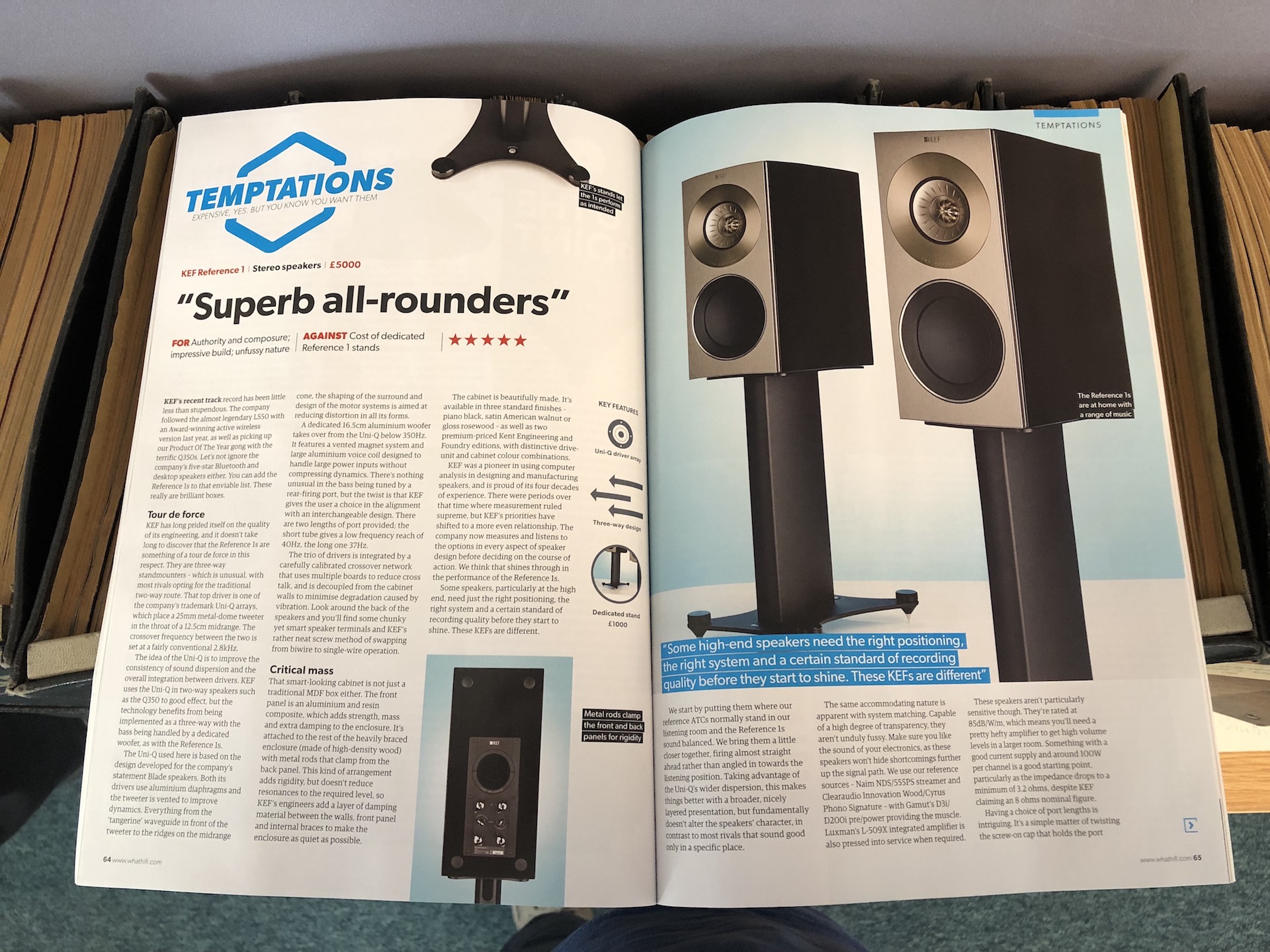
The price tag might be high but the Reference 1 are worth every penny – you won't find a better bookshelf speaker in KEF's entire stable. They're a shining (and shiny) example of KEF's high-end engineering at its best, and set a benchmark that few rivals can match. They look stunning in the flesh, with beautifully finished cabinets that you bolt onto KEF’s matching stands. A simply gorgeous speaker with the sound to match, the Reference 1 speakers are brilliant all-rounders that work superbly across across a wide range of music, systems and rooms.
KEF R3 (2018)

You don’t have to trawl back very far through the What Hi-Fi? Archive to find the KEF R3. They’re on page 62 of our 2018 Awards issue, complete with the stereo speaker Product of the Year stamp of approval. Such an accolade doesn’t get handed out to any old pair of speakers so you’d be right to assume the R3 are something special. We noted “a level of insight and detail resolution way beyond most rivals” and the fact they deliver "a sound good enough to worry most speakers below the two grand mark". The KEF R3 are the complete package and one of the most talented all-rounders we’ve heard from the brand in recent years, only recently eclipsed by the brand's own LS50 Meta.
- Read the full KEF R3 review
KEF LS50 Wireless II (2020)

Which brings us to another LS50 descendent.
When it comes to innovative and entertaining sequels, Wayne's World 2 or Deuce Bigalow: European Gigolo may spring to mind, but in 2020 KEF released the LS50 Wireless II all-in-one streaming speaker system and quickly earned a reputation as a follow-up of rare quality as well as a What Hi-Fi? Award. The Wireless II address the LS50 Wireless' minor imperfections and, while proudly maintaining the familiar chassis and Uni-Q driver arrangement, manage to squeeze out even more performance by introducing a new KEF innovation called Metamaterial Absorption Technology (also found on its LS50 Meta passive speakers, and hopefully on many more KEF models to come).
MAT is basically a clever way of absorbing sound waves that radiate from the rear of the tweeter dome so that they don’t distort the unit’s forward output, effectively creating an ‘acoustic black hole’ and absorbing 99 per cent of the unwanted sound. The effect was a purer treble, clean mids, and a more defined bass, with the whole presentation, opened out, offering subtler but more precise detail and greater instrument separation.
- Read our full KEF LS50 Wireless II review
Andy is Deputy Editor of What Hi-Fi? and a consumer electronics journalist with nearly 20 years of experience writing news, reviews and features. Over the years he's also contributed to a number of other outlets, including The Sunday Times, the BBC, Stuff, and BA High Life Magazine. Premium wireless earbuds are his passion but he's also keen on car tech and in-car audio systems and can often be found cruising the countryside testing the latest set-ups. In his spare time Andy is a keen golfer and gamer.

